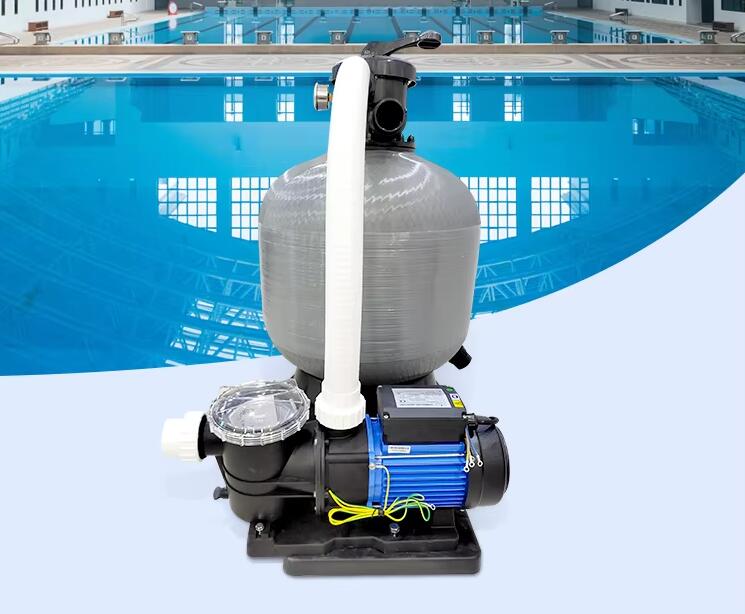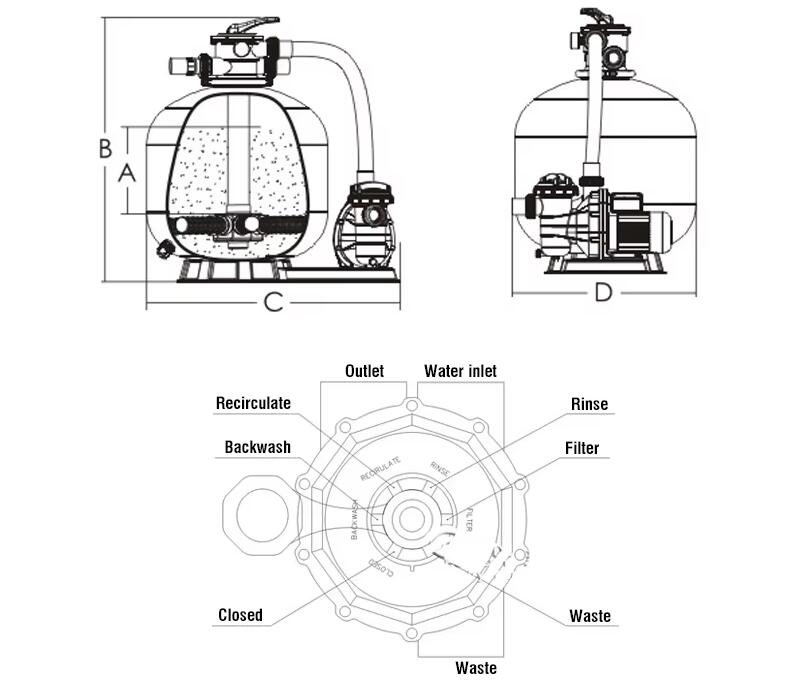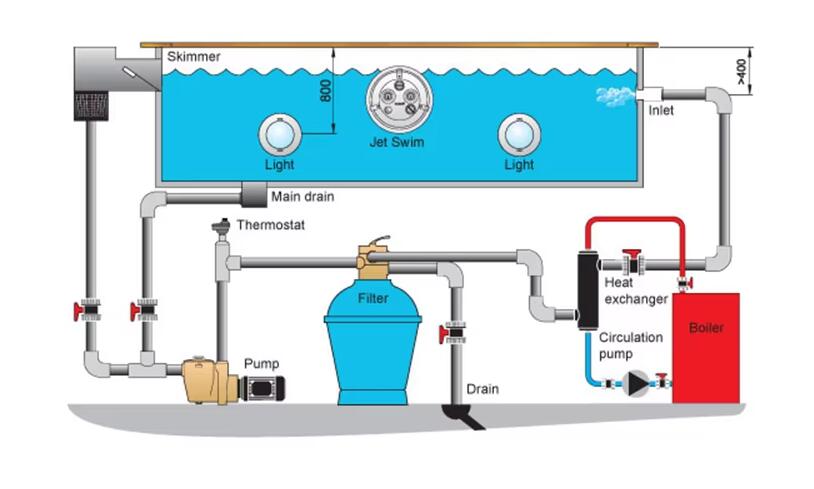
A swimming pool filtration system is a crucial component designed to remove dirt, debris, and contaminants from the pool water to keep it clean, safe, and clear. It works by circulating the water through a filter where impurities are trapped and removed before the water is returned to the pool. There are several types of pool filtration systems, each with its own method of cleaning the water, Fenlin will help you!
1. Pool Pump
Function: The pump draws water from the pool through the skimmers and main drains, then pushes it through the filter before returning it to the pool. The pump is essential for water circulation and filtration.
Operation: It ensures a steady flow of water, which allows the filter to do its job effectively.
2. Filter
Function: The filter is the primary device that removes contaminants like dirt, leaves, oils, and other particles from the pool water. There are three main types of pool filters:

Types of Filters:
Sand Filters: Use sand to trap debris as water passes through. The sand bed filters out particles as small as 20-40 microns. They require periodic backwashing to clean the sand.
Cartridge Filters: Use a replaceable filter cartridge made of pleated polyester to trap particles. They filter out smaller particles than sand filters (as small as 10-15 microns) and do not require backwashing, though the cartridges need to be cleaned and replaced periodically.
Diatomaceous Earth (DE) Filters: Use a fine, powder-like material called diatomaceous earth to coat grids inside the filter. DE filters are the most efficient, filtering particles as small as 3-5 microns. They require backwashing and recharging with fresh DE powder.
3. Skimmers and Main Drains
Function: These are the entry points where water is drawn from the pool into the filtration system.
Skimmers: Located along the sides of the pool, they capture floating debris like leaves and insects before the water is pulled into the filtration system.
Main Drains: Located at the bottom of the pool, they help remove heavier debris that sinks to the pool floor.
4. Return Jets
Function: After the water is filtered, it is pushed back into the pool through the return jets, which help with water circulation and prevent stagnant areas in the pool.

How a Pool Filtration System Works
1. Water Intake: The pool water is drawn from the pool through the skimmers and main drains by the pool pump.
2. Water Filtration: The water is pushed through the filter, which traps debris, particles, and impurities, removing them from the water.
3. Clean Water Return: After passing through the filter, the clean water is returned to the pool via the return jets, ensuring that the water is continuously circulated and cleaned.
Importance of a Filtration System
Maintains Water Clarity: The filtration system keeps the pool water clear by removing debris and particulates that would otherwise make the water murky.
Sanitation: While the filtration system physically removes debris, it works in conjunction with chemical sanitizers (such as chlorine or saltwater systems) to maintain water safety by controlling bacteria and algae growth.
Balanced Water Flow: Continuous circulation prevents algae formation and helps evenly distribute chemicals throughout the pool.
1. Sand Filtration System
How It Works: Water passes through a bed of specially graded sand that traps particles. After filtration, the clean water is returned to the pool. When the sand becomes clogged with debris, the system is backwashed, sending the dirty water out and cleaning the sand.
Pros: Low cost, easy maintenance.
Cons: Filters larger particles, requires regular backwashing.
2. Cartridge Filtration System
How It Works: Water passes through a cartridge filter made of pleated material, which traps dirt and debris. The cartridge is removed and cleaned periodically to maintain efficiency.
Pros: Filters smaller particles, no backwashing required, more energy-efficient.
Cons: Cartridges need to be replaced, more expensive than sand filters.
3.DE Filtration System
How It Works: Water flows through a grid coated with diatomaceous earth powder, which traps even the smallest particles. Like sand filters, DE filters need to be backwashed, and the DE powder must be replenished.
Pros: Best filtration, captures the smallest particles.
Cons: More complex maintenance, higher cost, requires periodic DE powder replacement.

A swimming pool filtration system is essential for maintaining clean, safe, and inviting water. The type of system you choose will depend on factors such as pool size, maintenance preferences, and budget. Proper maintenance and regular cleaning of the filtration system are crucial to keeping the pool water clear and healthy for swimmers.


















